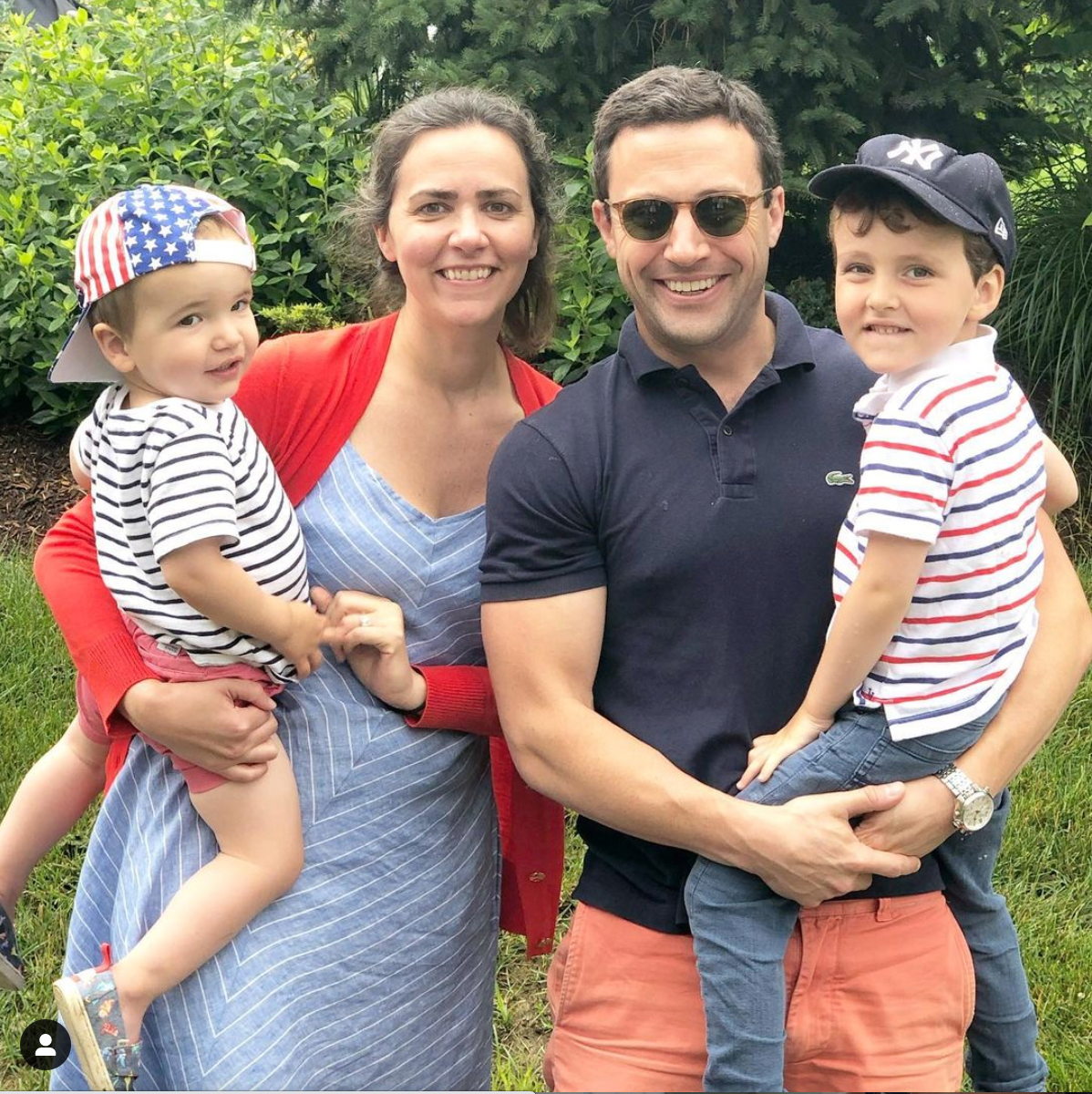Lindsay's story:
Is parental leave really a hiccup? Here’s how Lindsay used a 6-month maternity leave to make a case for a promotion and change the working game for women in VC
Parental leave is an uphill battle, often pushing against a stigma of inconvenience, a hiccup, or a career pause. But what if you came back from this so-called inconvenient break, and ended up with a new crown?
That’s what happened to Lindsay, a mom who earned a promotion on the first day back after a six-month maternity leave.
Yes, you read that right: American Express offers a six-month leave for birthing parents, a almost unheard-of benefits policy in the U.S. Despite initial hesitations, Lindsay took advantage of this offering so she could spend adequate time adjusting to her new baby and family dynamics.
During this period, she was able to keep the ball rolling for her Amex Ventures team without the pressure of always being “on.” She earned respect from leadership and peers, which led to a promotion to Managing Director.
Lindsay’s success is unconventional but inspiring. She didn’t see her time out as a disruption but rather an opportunity to maximize her impact before leaving. For Lindsay, a long leave allowed time to bond with her baby and accelerate her career.
Keep reading to see how Lindsay used her maternity leave to build a case for her promotion, discovered the pandemic’s advantages for women in VC investing, and continues to navigate work-life balance with a demanding career. Dive deeper below.


#1 How Lindsay used her parental leave planning process to get promoted
Leading up to Lindsay’s first parental leave, she was on track to get promoted that year. She was concerned about how the timing of her pregnancy could impact this schedule - but decided to proactively advocate for the promotion, accelerate her deliverables and more clearly document her impact as she built her coverage plan. As a result, she was promoted her first day back from parental leave.
Here’s how she planned for parental leave with a promotion as her post-leave goal:
- Had a conversation with her manager about exactly what would be required for promotion
- Focused on activities that were most important to get her promotion: So much of the VC investing world is reactive (networking, responding to questions from portfolio company executives), but Lindsay had to ensure she was hyper focused on the most critical proactive aspects of her job so that she could go into parental leave with several “wins” under her belt. Namely, she focused on:
- Closing a few deals, and executing them flawlessly: She identified a few deals that she knew she could close before her baby arrived, and she diligenced and negotiated them before going on leave. She was disciplined about pushing timelines forward, keeping momentum, and showcasing her ability to execute high quality investments.
- Spearheading strategic projects that were high impact: Since her role was corporate VC, there was an expectation that investors lead strategic projects in addition to investing. Lindsay picked a few projects to focus on and close prior to going on leave to show her capabilities in this space.
- Still prioritized her parental leave: Despite wanting to get promoted, she never questioned whether or not to take the full six months of parental leave. American Express’ culture is strongly supportive of taking full parental leaves, and Lindsay really wanted to take this time to welcome her child. “I would never turn down additional salary, and parental leave feels like it’s part of my salary so why would I take less than six months?”
- Planned to respond to emails she received while on leave, but did not want to sit down and put together any work or take on new projects: “I felt privileged that I was “needed” during this time, so I didn’t mind doing some work so long as I wasn’t asked to do mundane corporate tasks that would have been a waste of my time. The stuff that I did helped me feel like I was still valued and connected to my pre-baby self, and it was pretty much all email work that didn’t require me to get on a computer.”
- Paused taking on any new deals, but continued to support her portfolio investments with the help of her coworkers: All new deals she handed off to coworkers to work on while she was on leave, but she maintained her board responsibilities and continued to offer support to her portfolio companies.
- Decided to do selective networking while on leave: Lindsay prioritized networking with other VC investors, which is an important aspect of securing deal flow. She decided not to network with founders and company leaders, as she knew she wouldn’t be able to do the appropriate follow-up to support those companies.
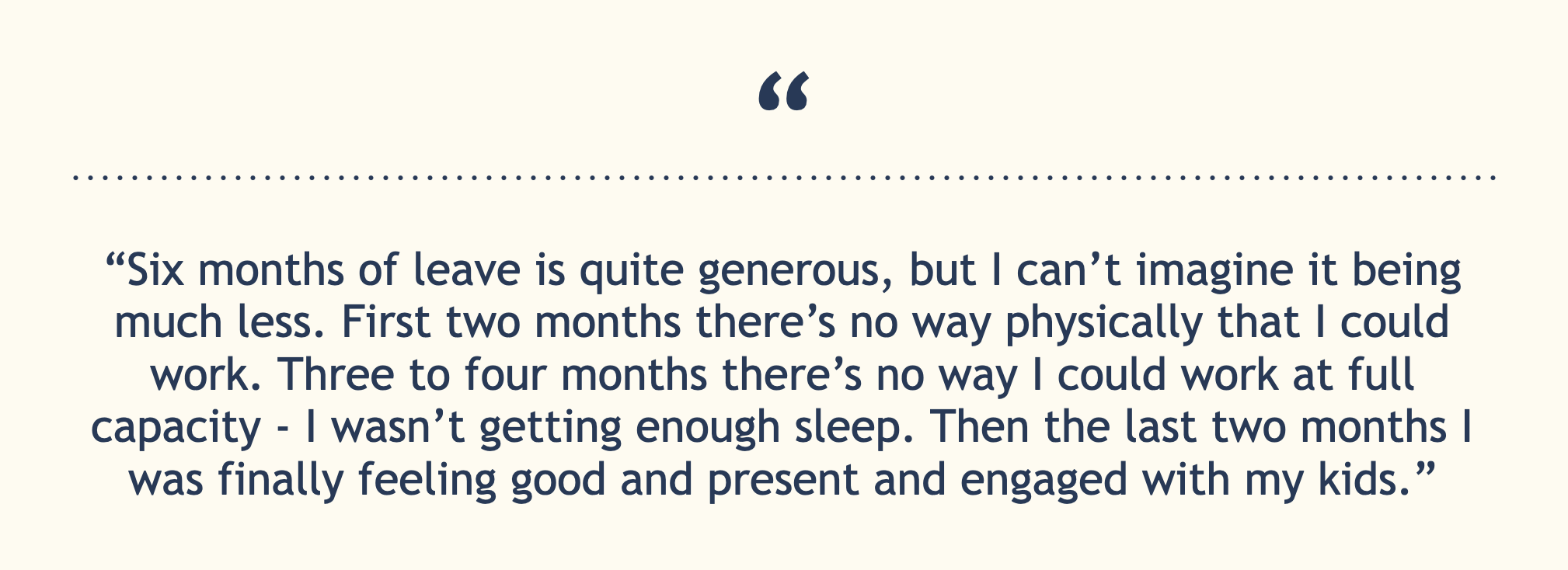
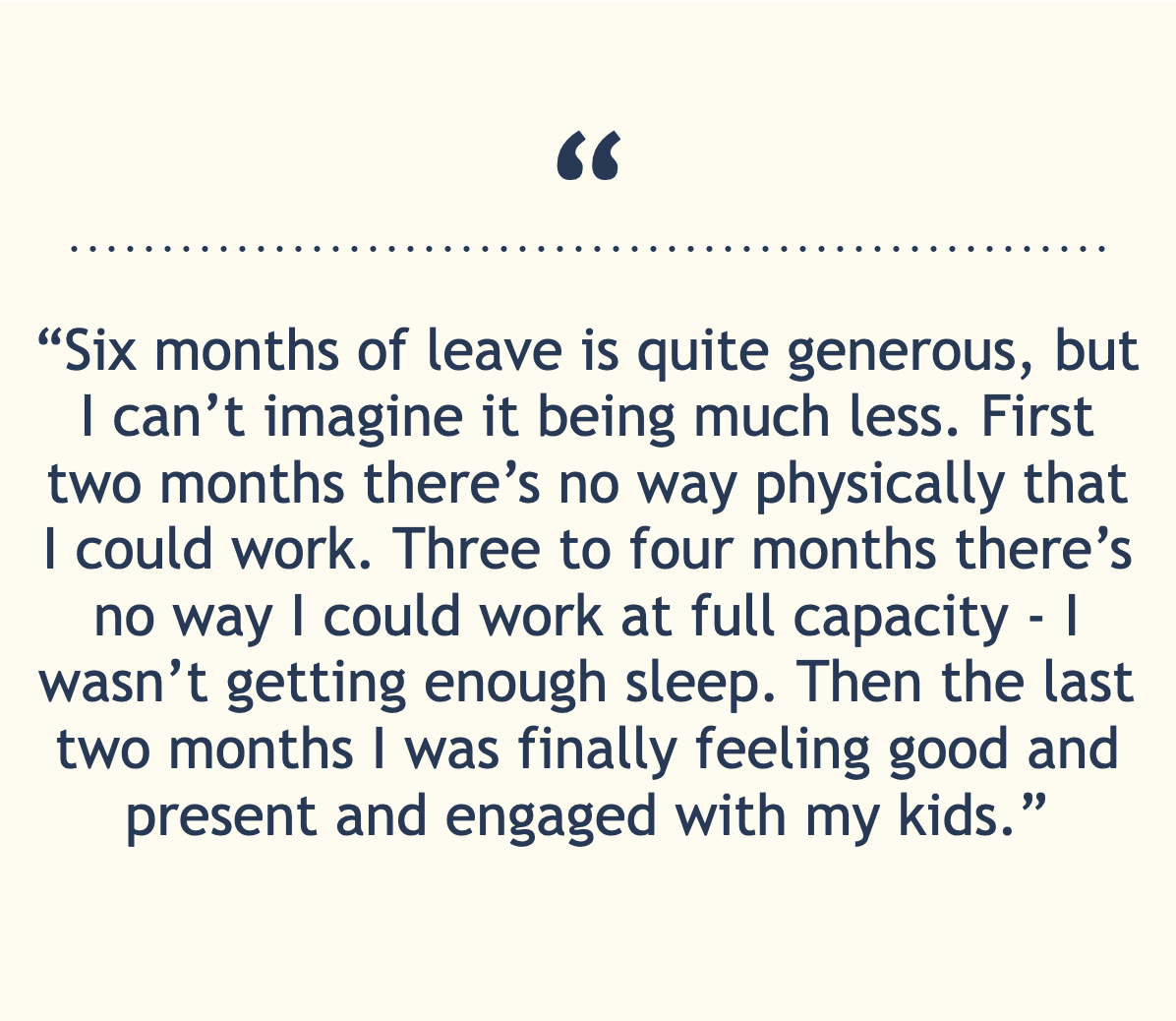
#2 Why going back to work WFH (due to COVID) was a good experience
Lindsay had her second child in October 2019, which meant that her parental leave ended just as the world was transitioning to WFH in March 2020. Returning to work after parental leave was - and continues to be - much easier in a WFH capacity as compared to returning to work fulltime in an office.
Here’s why Lindsay hopes to maintain a mostly WFH situation going forward:
- The morning rush is more pleasant: “The hardest part about working has been the early morning commute and the rush back at 5:15pm - all of that stress is eliminated when you’re working from home without a commute and with childcare in your home.”
- Breastfeeding is dramatically easier: Being able to feed your baby instead of having to pump in an office allows a lot of women to continue to breastfeed for much longer, and is a generally easier and more pleasant experience. It also eliminates the stress of storing and transporting milk from the office.
- The “playing field” is more equal: Venture investing is largely dependent on networking with both founders and other investors - activities that historically have taken place largely at happy hours and dinners. The hybrid and WFH environment eliminated all of those after-hours events, and now networking is more about jumping on calls during the day which is much more preferable to working parents. “After I had kids, I really didn’t like the cultural expectation of drinks after work - I just wanted to go home and see my kids. Over time I learned how to set up breakfast and lunch meetings so that I didn’t have to do after hours events. I realized during the pandemic that I’m getting better at my job because those after-hours drinks aren’t happening so I’m not missing out on anything anymore.”
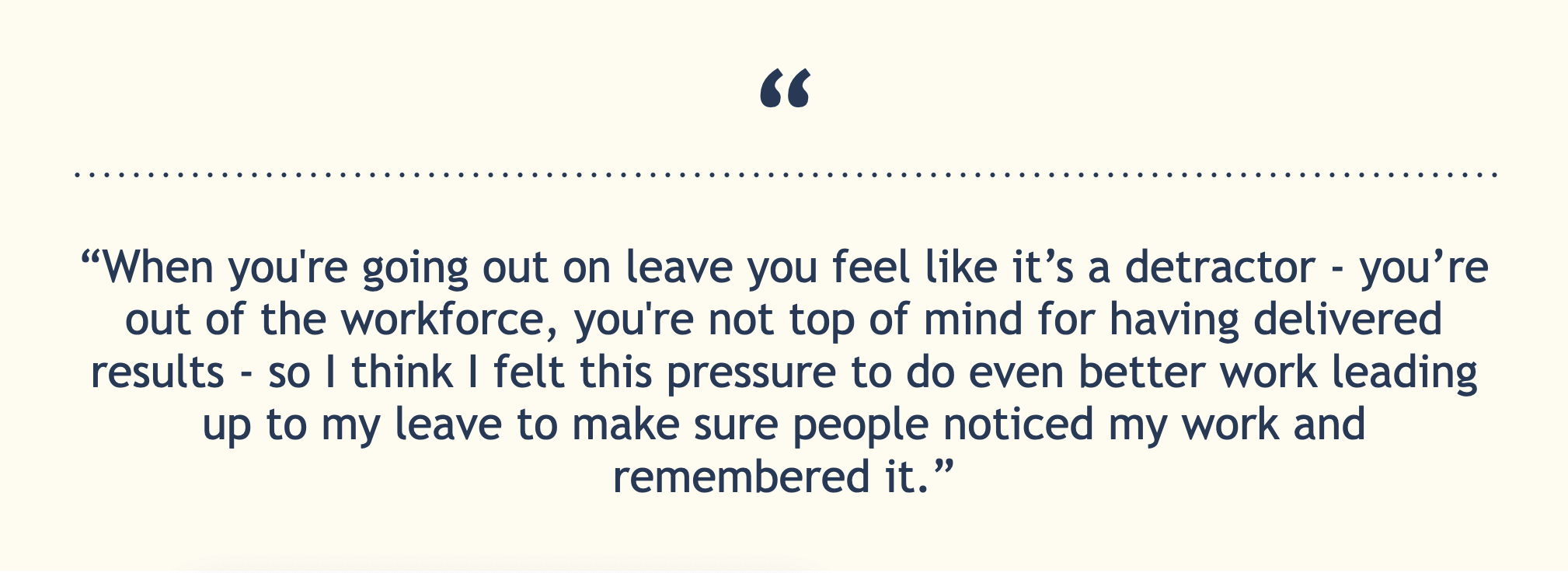
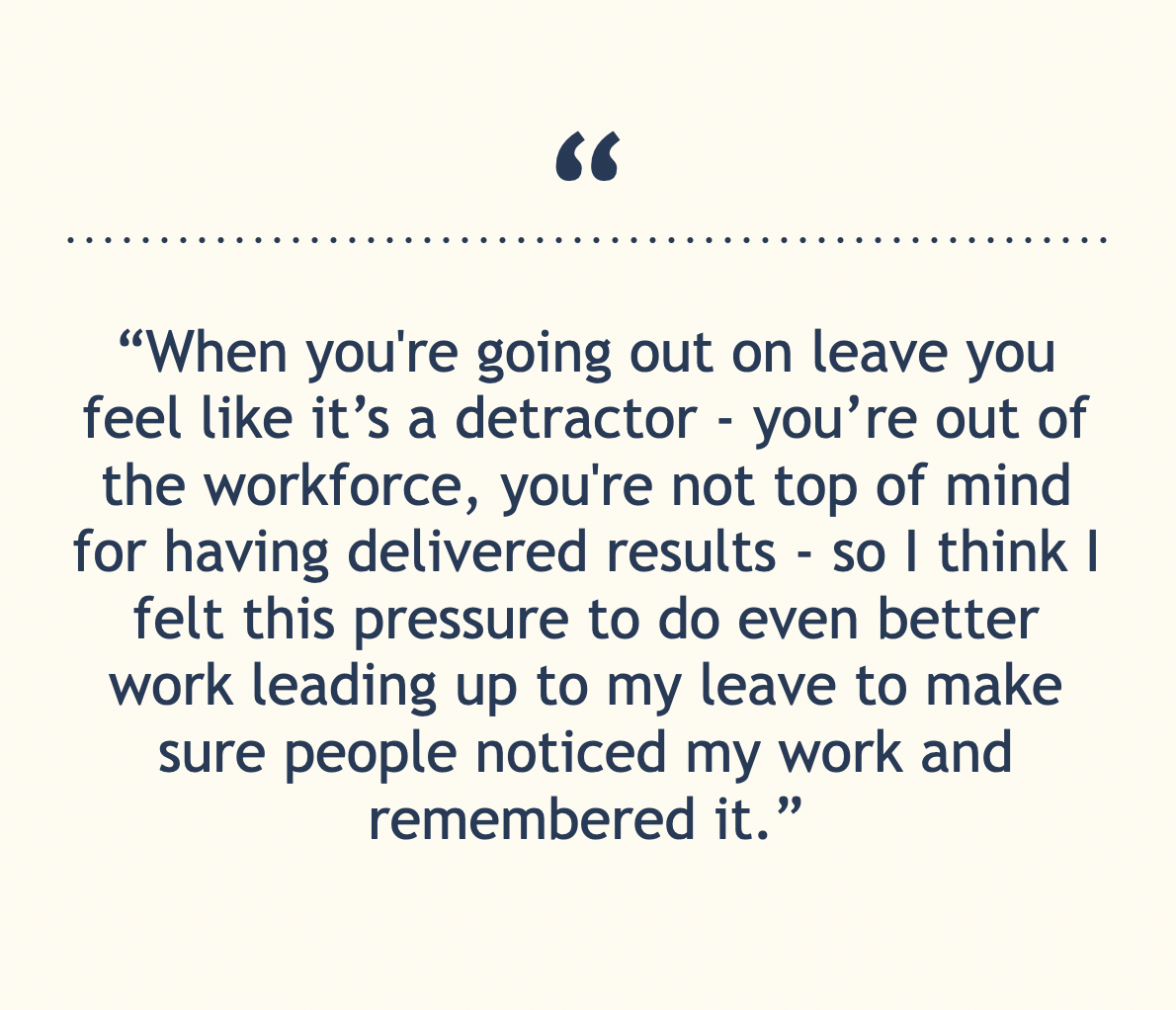
#3 How to manage work-life
Lindsay offers a few examples of how she and her husband create boundaries that allow them to optimize their careers and home life:
- Turn off email on weekends: Lindsay is “totally engrossed” in home life on the weekends. Short of an emergency or urgent situation, Lindsay will not send or check her work emails until Monday morning.
- Find Dependable childcare and back-up childcare: Lindsay’s parents live close by and are dependable backup childcare - and during the pandemic were their primary childcare, which was “game-changing.”
- Try not to mix childcare and work: “I hate to be watching the kids and trying to respond to emails. I’d rather focus on the kids and then get back online at night.”
- Identify who is the “primary parent” each day of the work week - and trade off: Whoever isn’t “the primary parent” that day can work longer hours, and the primary parent is responsible for relieving the childcare provider, cooking dinner and managing the bedtime routine. Liindsay and her husband started doing this once commuting back to the office began, and they switch off who is “primary parent” based on who is not in the office that day (ensuring they don’t both go to the office on the same day).
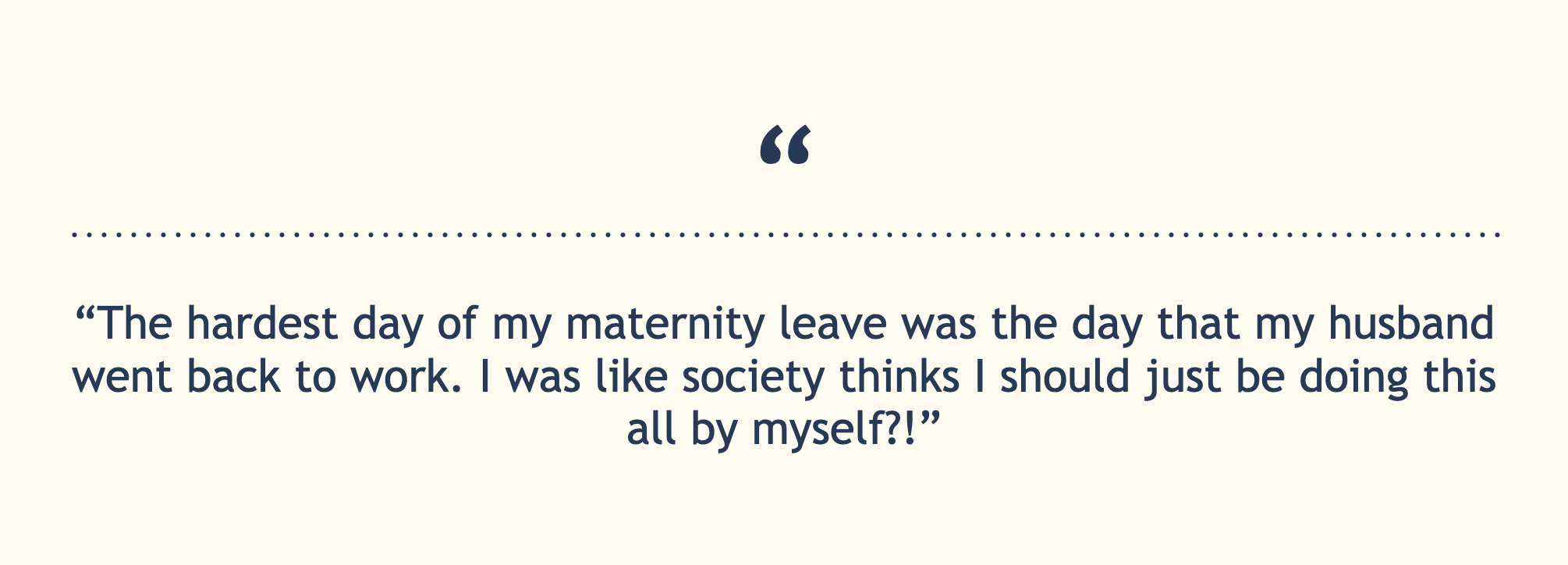
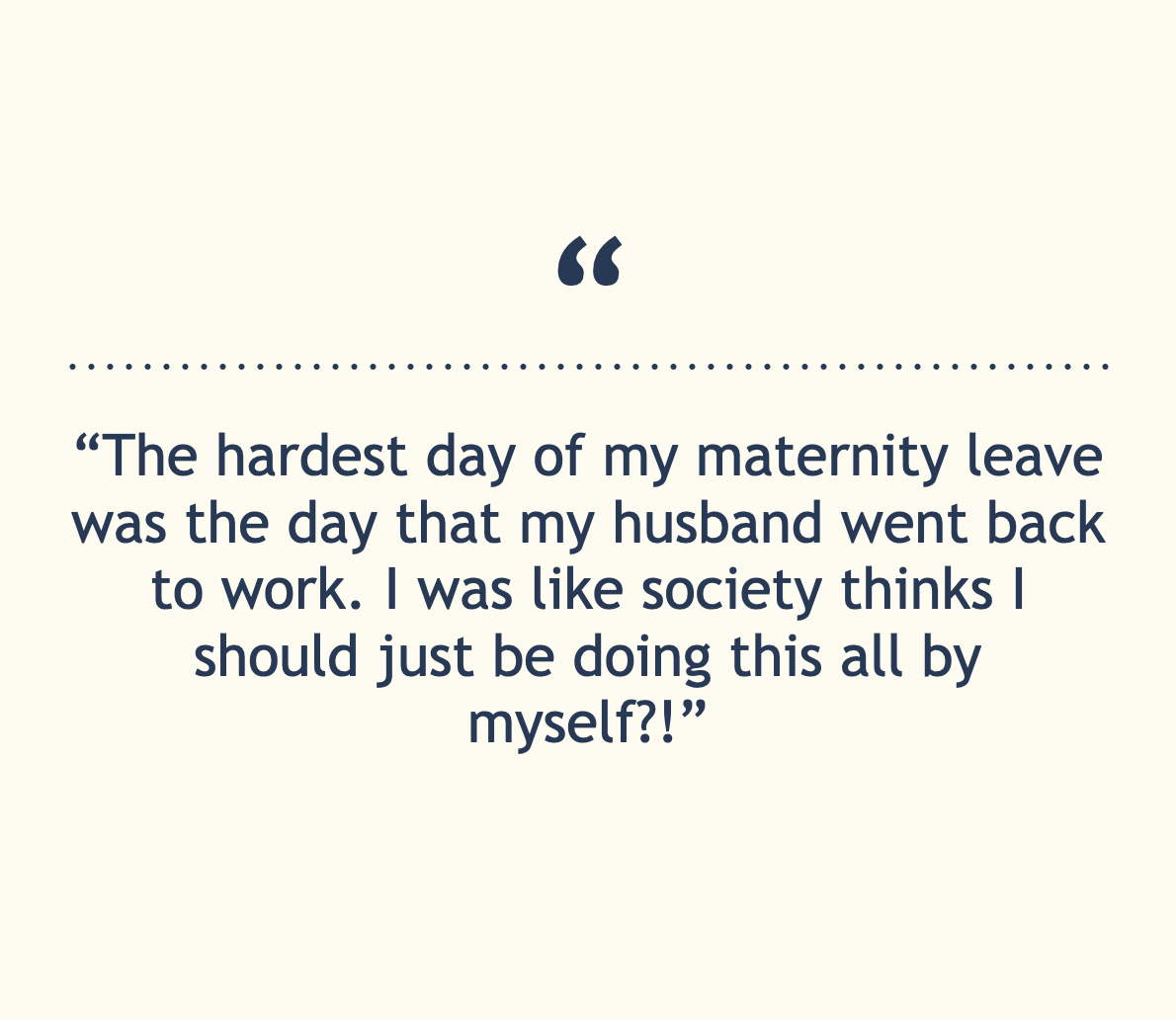
Want to read more of these stories?
Subscribe to our newsletter to get our newly published parent profiles directly into your inbox each month.
Sign me up!
